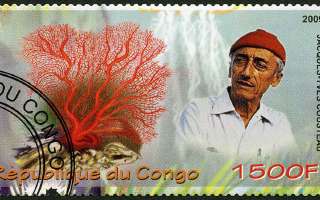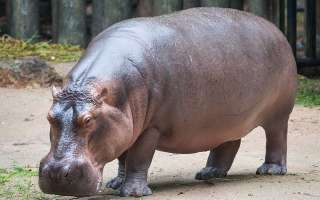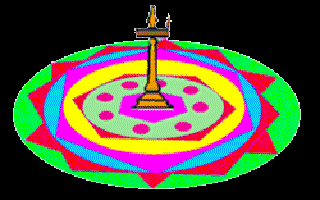We use the ‘Flesch–Kincaid Grade Level Formula’ to present scores as per US grade level. See all the grade levels here. Following articles, stories and features are appropriate for people at reading level of Grade 8 (Age 13-14 years). More information about Flesch–Kincaid readability tests can be found here.
257 items in this section. Displaying page 2 of 26
Why don't Birds on a wire get a shock?
Now how is that possible? The fact is, for a living creature to get a ‘shock’ there has to be a substantial flow of current through the body. However, there is barely any current running through the bird’s body for two reasons. Firstly, the bird not only forms a circuit with the wire, but it also offers a high resistance to current, so the current passes through the wire instead of the bird. It’s a bit like this, would you prefer going on a smooth road or a road full of potholes?...
Jacques-Yves Cousteau
If there is one person who single-handedly fascinated millions of landlocked viewers to venture underwater into the unknown, through television, it is the Frenchman Jacques Cousteau. Jacques-Yves Cousteau was born on June 11, 1910, in the town of St.-Andre-de-Cubzac near Bordeaux, in France, to Daniel and Elizabeth Cousteau. As a child, Jacques was quite sickly but he nonetheless learned to swim at the age of four. His initial dip led to his everlasting love for the sea....
Why is a Hippopotamus called a River Horse?
Among Africa’s unusual creatures is a barrel-shaped gigantic animal, the hippopotamus (plural hippopotami). The hippo is the third largest land animal after the elephant and the rhino. Slightly smaller but heavier than a white rhino, a hippo can weigh nearly 1,800 kg. The animal is huge and barrel shaped nearly 12 feet long and five feet at its shoulder, with a short thick neck and small ears. River Horses [Illustration by Anup Singh] Hippos, or to use their biological name, hippopotamus amphibious literally means ‘river horse’....
Where Did Shoes Come From?
Ooh, aah, ouch! People in ancient times must have yelped like this when they walked on rough ground without any shoes on. And it was probably the pain and discomfort that propelled them to cover their feet for protection. Footwear has a history which goes back many thousands of years, and has long been an article of prestige for people in different societies. Where Did Shoes Come From? [Illustration by Anup Singh] The earliest footwear, probably made of plaited grass or rawhide held to the foot with thongs was undoubtedly born of the necessity to provide some protection when moving over rough terrain in varying weather conditions....
A Fish with Three Hearts: Cuttlefish
It is said to be a royal among sea animals because it has blue blood, literally. And the cuttlefish has a large heart. Actually, it is not one but three hearts. And it is not even a fish but belongs to the same family as the squid and the octopus. They are called the cephalopods, which literally translated means head-foot. The blood of the cuttlefish is blue because of the huge amount of copper in it....
Srinivasa Aiyangar Ramanujan
Srinivasa Ramanujan was one of India’s mathematical geniuses. He made wonderful contributions to the field of advanced mathematics. Even today, his fascinating results and mathematical theories, and a number of unpublished notebooks filled with theorems, continue to baffle and enthrall mathematicians. Ramanujan was born in his grandmother’s house in Erode, a small village near Chennai in Tamil Nadu. While he was still a baby, his mother took him to Kumbakonam, near Chennai, where his father worked as a clerk in a cloth merchant’s shop....
Onam — The Harvest Festival
The harvest festival of Kerala, Onam, falls on Shravan day in the month of August or September. After a lush harvest, Onam is the time for the farmers to celebrate the bounties of nature and make merry. Like most festivals of India, Onam too has a legend associated with it. The story goes: A long time ago an Asura king named Mahabali ruled Kerala. He was dearly loved by his subjects and was known to be a just and wise ruler....
Who or What is a Gladiator?
It all started in ancient Rome. The most brutal sport that has ever existed in the history of the world was the fights between gladiators. The ‘sport’ traces its roots to the custom among the Etruscan people, a civilisation in Italy that existed before the Roman civilisation. At the death of the master of the house, servants would duel to the death for the right to follow their owners in death and provide help and company....
What is a Volcano?
What is nature’s most powerful, most destructive, most dangerous form? Some would say an earthquake, others a cyclone. However, these phenomenon are relatively smaller and less destructive in scale compared to the fury of a volcano. Fourteen miles southeast of Naples in Italy, lie the remains of an ancient town called Pompeii. The city flourished under the shadows of the towering Mount Vesuvius. In 79 AD, the volcano erupted, destroying the cities of Pompeii, Herculaneum, Stabiae and Torre Annunziata....
How Does Satellite TV Work?
Nine ‘o’ clock. It’s time for your favourite serial on television. Have you ever wondered how the same serial can be viewed by millions of people across the world? This is possible because of satellite television technology. It uses man-made or artificial satellites to send your favourite serial to your television set. But why do we need satellites for this purpose? How Does Satellite TV Work? The earth is round To understand this, we have to first take a look at the shape of our earth....








